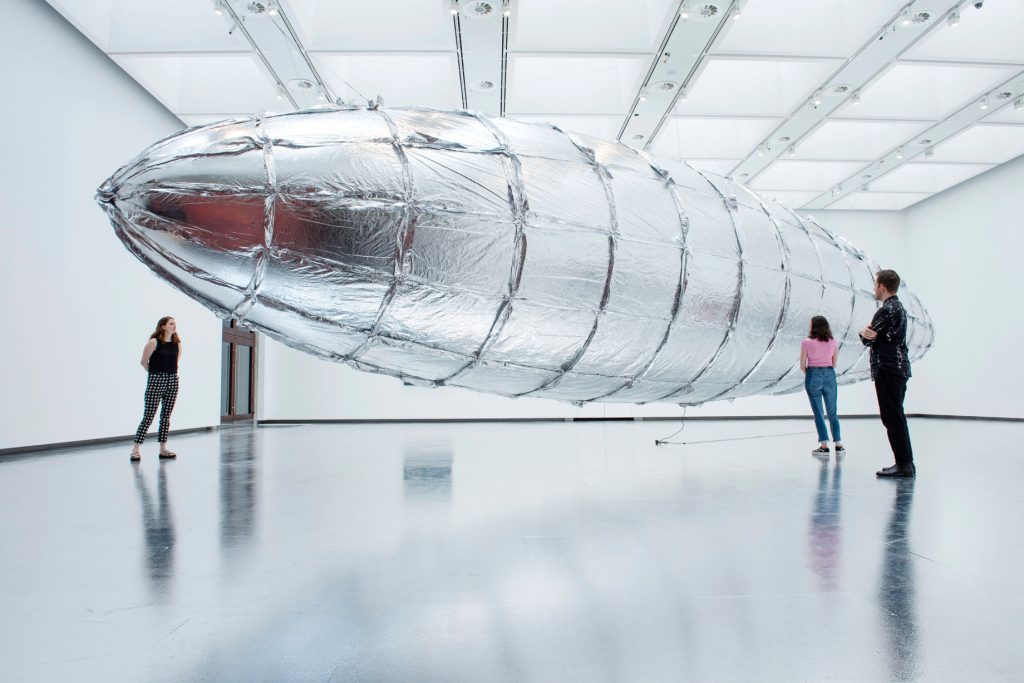
“Extensive Showcase Highlighting Almost 30 Years of Lee Bul’s Artistic Creations”

For artists who have dedicated many years to their craft, survey exhibitions present a significant chance for us to perceive their works as a cohesive body. What common threads exist? Are there motifs that recur from one project to another? Artist Lee Bul is a prominent figure in contemporary Korean art, and a comprehensive survey exhibition of her creations at the Leeum Museum of Art delves deep into her artistic psyche. The exhibition, titled Lee Bul: From 1998 to Now, encompasses almost three decades of her creative endeavors.
Lee made her entrance in the late 1980s, garnering attention with her experimental pieces that responded to Korea’s tumultuous sociopolitical landscape. Since then, her artistic expression has traversed performance, sculpture, installation, and two-dimensional artworks. Across these varied mediums, she explores duality and frequently the contradictions within it. This includes the relationship between humans and technology, and between nature and civilization. To fully scrutinize them, she examines the broader power structures that give form and dimension to these concepts.
The exhibition launches with works created in the late 1990s and extends to the present day, featuring around 150 works in total. However, the exhibition doesn’t follow a linear timeline; instead, it reveals itself as an “unpredictable landscape” where visitors embark on a multifaceted and open-ended experience. Along the journey are urban ruins, bunkers, towers, metallic airships, and mirrored mazes. The experience is richly complex and non-linear, fostering exploration across both time and space.
The Mon grand récit is regarded as the centerpiece of the exhibition, having been integral to Lee’s practice since 2005. This series of works contemplates the contradiction between the desire for perfection (a utopia) and the reality of existence (a sense of disillusionment). The title references François Lyotard’s idea of the fall of the “grand récit,” or metanarrative. Metanarrative is a social theory suggesting that a comprehensive narrative or interpretation of smaller events legitimizes a central idea. Essentially, these smaller narratives are woven together into an overarching story, providing a framework for belief. Lee reinterprets the “grand récit” through irony and complexity. Her inspirations for these topographical installations range from utopian literature and Romantic landscape paintings to the historical backdrop of modern and contemporary Korea.
Other notable works include a karaoke installation and Lee’s Civitas Solis II, a large-scale mirrored installation that generates infinite reflections, creating a disorienting and distorted perspective of everything contained within.
Eugene Kim, co-founder and editor-in-chief of My Modern Met, had the chance to visit the exhibition while in Seoul. “The immersive environments filled with glass and mirrored surfaces transform viewers into active participants,” he notes. “The scale, precision, and interplay of reflection instill a profound sense of wonder. The exhibition fits seamlessly into Leeum’s site-specific environment, alongside installations such as Olafur Eliasson’s Gravity Stairs and Kimsooja’s To Breathe–Leeum.”
Lee Bul: From 1998 to Now is displayed at Leeum Museum of Art in Seoul, South Korea, until January 4, 2026.